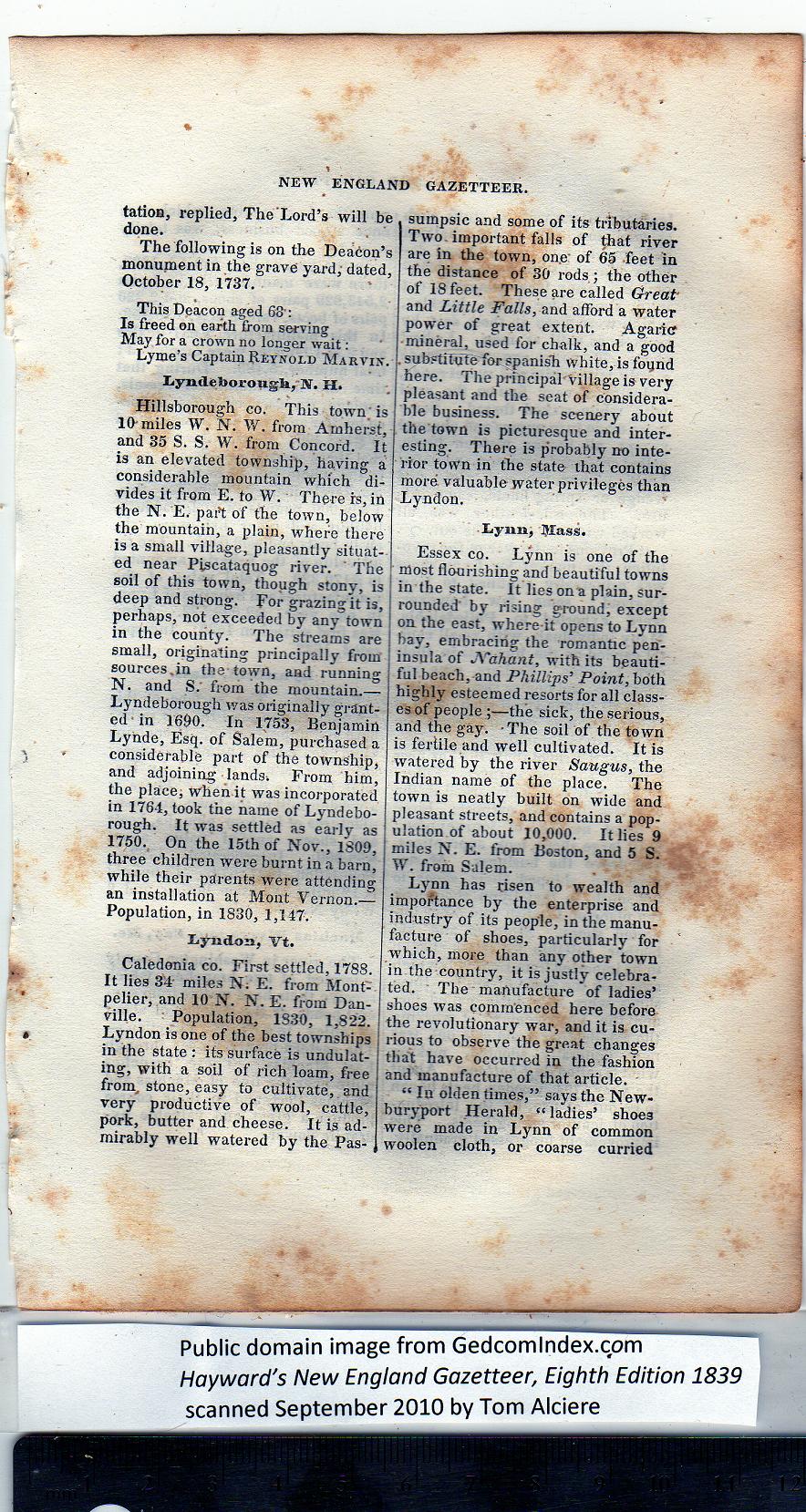|
tation, replied, The Lord’s will be
done.
The following is on the Deacon’s
monument in the grave yard; dated,
October 18, 1737.
This Deacon aged 6o-:
Is freed on earth from serving
May for a crown no longer wait:
Lyme’s Captain Reynold Marvin.
Lyndeborougk;N. H.
Hillsborough co. This town; is
10-miles W. N. W. from Amherst,
and 35 S. S. W. from Concord. It
is an elevated township, having a
considerable mountain which di-
vides it from E. to W. There rs, in
the N. E. pari of the town, below
the mountain, a plain, where there
is a small village, pleasantly situat-
ed near Piscataquog river. The
soil of this town, though stonv, is
deep and strong. For grazingit is,
perhaps, not exceeded by any town
in the county. The streams are
small, originating principally from
sources.in the town, and running
N. and S. from the mountain.—
Lyndeborough was originally grant-
ed in 1690. In 1753, Benjamin
Lynde, Esq. of Salem, purchased a
considerable part of the township,
and adjoining lands* From him,
the place; when it was incorporated
in 176-1, took the name of Lyndebo-
rough. It wa3 settled as early as
1750. On the 15th of Nov., 1809,
three children were burnt in a barn, '
while their parents were attending
an installation at Mont Vernon.—
Population, in 1830, 1,147.
Lyndon, Vt. |
Caledonia co. First settled, 1788.
It lies 34 miles N. E. from Mont-
pelier, and 10 N. N. E. from Dan-
ville. Population, 1S30, 1,822.
Lyndon is one of the best townships
in the state : its surface is undulat- j
ing, with a soil of rich loam, free
from, stone, easy to cultivate, and
very productive of wool, cattle,
pork, butter and cheese. It is ad-
mirably well watered by the Pas-
sumpsic and some of its tributaries.
Two important falls of that river
are in the town, one of 65 feet in
the distance of 30 rods ; the other
of 18 feet. These are called Great
and Little Falls, and afford a water
power of great extent. Agaric
mineral, used for chalk, and a good
. substitute for Spanish white, is found
. here. The principal Village is very
j pleasant and the seat of considera-
ble business. The scenery about
the town is picturesque and inter-
esting. There is probably no inte-
rior town in the state that contains
more valuable water privileges than
Lyndon.
Lynn, Mass.
Essex co. Lynn is one of the
most flourishing and beautiful towns
in the state. It lies on a plain, sur-
rounded by rising ground, except
on the east, where it opens to Lynn
bay, embracing the romantic pen-
insula of J\~ahant, with its beauti-
ful beach, and Phillips’ Point, both
highly esteemed resorts for all class-
es of people ;—the sick, the serious,
and the gay. -The soil of the town
is fertile and well cultivated. It is
watered by the river Saugus, the
Indian name of the place. The
town is neatly built on wide and
pleasant streets, and contains a pop-
ulation of about 10,000. It lies 9
miles N. E. from Boston, and 5 S.
W. from Salem.
Lynn has risen to wealth and
importance by the enterprise and
industry of its people, in the manu-
facture of shoes, particularly for
which, more than any other town
in the-country, it is justly celebra-
ted. The manufacture of ladies’
shoes was commenced here before
the revolutionary war, and it is cu-
rious to observe the great changes
that have occurred in the fashion
and manufacture of that article.
“ In olden times,” says the New-
huryport Herald, “ladies’ shoes
were made in Lynn of common
woolen cloth, or coarse curried |
